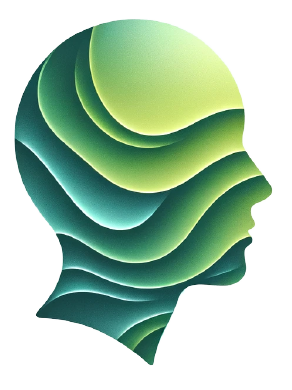The Power of Keeping a Migraine Diary: A Practical Path to Prevention
Clues to why migraines happen are the starting point for effective prevention. But each person experiences migraines in a different way. So the question isn’t what triggers migraines, but what triggers your migraines.
A migraine diary is your first step in finding out. A migraine diary, also known as a migraine tracker or headache journal, is a record-keeping tool for tracking migraine triggers, symptoms and patterns over time. In today’s digital age, there are even headache diary apps available, providing convenient ways to record and analyze migraine data.
Key takeaways
- Living with migraines can be a daunting experience, but using either a migraine log or digital migraine diary to record migraine patterns can be a powerful tool in managing this debilitating condition effectively. In this article, we explore migraine diary benefits, how to record migraine symptoms effectively, and the advantages of using a migraine diary template.
Understanding the Migraine Diary

A migraine diary serves as a comprehensive record of an individual’s migraine experiences. It typically includes details such as the date and time of each migraine episode, the severity and duration of the headache, associated symptoms (such as nausea, sensitivity to light or sound), potential triggers (such as stress, weather changes, or certain foods), and any medications or treatments used to prevent or alleviate symptoms.
Migraine Diary Benefits
- Track migraine triggers. One of the primary benefits of maintaining a migraine diary is the ability to identify triggers that may contribute to migraine attacks. By tracking your own unique migraine patterns over time, individuals can pinpoint common triggers and take proactive steps to avoid or minimize their impact.
- Record migraine symptoms. A migraine diary allows you to record the specific symptoms experienced during each migraine episode. Was there an aura? When did you first notice symptoms? What symptoms did you experience? How long did they last? Was there a full-blown attack? Everything in your migraine log in can be valuable for healthcare providers in diagnosing and managing your migraines effectively. It can also arm you with key information, like knowing how long the aura lasts so you have time to take action to minimize —even prevent—the subsequent pain and nausea.
- Monitor migraine patterns. Following episodes over time can reveal valuable insights into your unique migraine patterns and trends. For example, you may notice that migraines occur more frequently during certain times of the day, month, or year, or that they are more prevalent during periods of increased stress or hormonal fluctuations.
- Know what treatments work — and which don’t. Your headache journal enables you to track various treatments and interventions, and to evaluate which were and weren’t effective for you. By documenting the outcomes of different medications, lifestyle changes, or alternative therapies, you will be able to eliminate some guesswork and make informed decisions about your own strongest migraine prevention and management plan.
- Partner effectively with your healthcare providers. Good communications with your doctor are critical. A detailed migraine diary provides valuable information that can make them real partners, working with you to make the right diagnosis and treatment decisions for your unique situation. By sharing the data recorded in the migraine diary with your entire healthcare team, you can have more productive discussions and receive far more personalized care.
How to Keep a Migraine Diary
Keeping a migraine diary involves regular and consistent recording of relevant information. Here are some tips for maintaining a migraine diary that becomes a powerful tool for prevention.
- Choose a format. Decide whether you prefer to keep a physical journal or use a digital migraine diary app. Both options offer benefits, so choose the format that best suits your preferences and lifestyle.
- Record symptoms promptly. Make a habit of using your migraine diary to record auras and episodes as soon as they occur, while the details are still fresh in your mind. Be sure to include information about the onset, duration, severity, and characteristics of the headache, as well as any associated symptoms.
- Be consistent in how you record information for each migraine episode. Using a migraine diary template can standardize how you log in details such as diet, sleep patterns, stress levels, and environmental factors. The more consistent you are in recording migraine symptoms and patterns, the more clearly you’ll see clues to preventing your migraines.
- Review and analyze data. Periodically review the data recorded in your migraine diary to identify patterns, trends, and potential triggers. Look for correlations between specific factors and migraine episodes, and consider making adjustments to your lifestyle or treatment plan as needed.
- Share your migraine diary with healthcare providers. They will use your observations about migraine patterns to map out a prevention plan tailored to your specific triggers and symptoms.
The Value of a Digital Migraine Diary

In recent years, digital migraine diary apps have gained popularity as convenient and accessible tools for tracking migraine patterns. These apps offer features such as customizable tracking fields, data visualization tools, reminder notifications, and the ability to sync data across multiple devices.
Digital migraine diary apps provide several advantages over paper-based headache journals, including:
- Convenience: Digital migraine diary apps can be accessed anytime, anywhere, making it easier to record migraine symptoms promptly.
- Customization: Many apps provide migraine diary templates users can customize to suit their individual needs and preferences.
- Data Visualization: Digital migraine diary apps often include built-in data visualization tools, such as charts and graphs, which can help users identify migraine patterns and trends more easily.
- Reminder Notifications: Some migraine diary apps offer reminder notifications to prompt users to log migraine episodes and other relevant information.
- Data Security: Digital migraine diary apps typically offer secure data storage and backup options, ensuring that valuable information is protected.
Conclusion
Maintaining a migraine diary is a valuable tool for managing migraines effectively. Whether in traditional paper format or through a digital migraine diary app, the act of recording migraine symptoms, triggers, and patterns can provide valuable insights into your specific migraines and inform personalized migraine prevention and treatment strategies. The key is to find a method that works for you and stick with it. With the power of a migraine diary at your fingertips, you can take control of your migraine journey and work towards better health and well-being.
Sources

Natural Remedies
2 Aug 2024
5 min read
Can weather cause migraine headaches? A forecast for fewer headache days
For centuries, individuals afflicted with migraines have reported a curious phenomenon: their headaches seem to wax and wane with changes in the weather. From the onset of a storm, to shifts in temperature, humidity or barometric pressure, the connection between migraine and weather has long captured the attention of scientists and sufferers alike. In this […]

Alternative Therapies
2 Aug 2024
7 min read
Understanding the Complex Relationship Between Migraine and Hormones
Among Americans, 17.1% of women and 5.6% of men suffer migraines.1 Both genders often experience a link between their migraines and hormone shifts. A growing body of research suggests that both male and female sex hormones could influence the course of tension-type and migraine headaches. What hormones are involved and how can these hormone migraines be managed? […]

Alternative Therapies
2 Aug 2024
9 min read
Understanding Migraines in Children: Symptoms, Impact and Treatments
Migraines are often perceived as an adult ailment, but migraines in children do occur. In fact, about 1 in 10 children experience recurrent headaches due to migraine. Symptoms of up to 18% of patients in the pediatric emergency room are found to be migraine-related.1 However, childhood and adolescent migraines look different than adult migraine — […]



